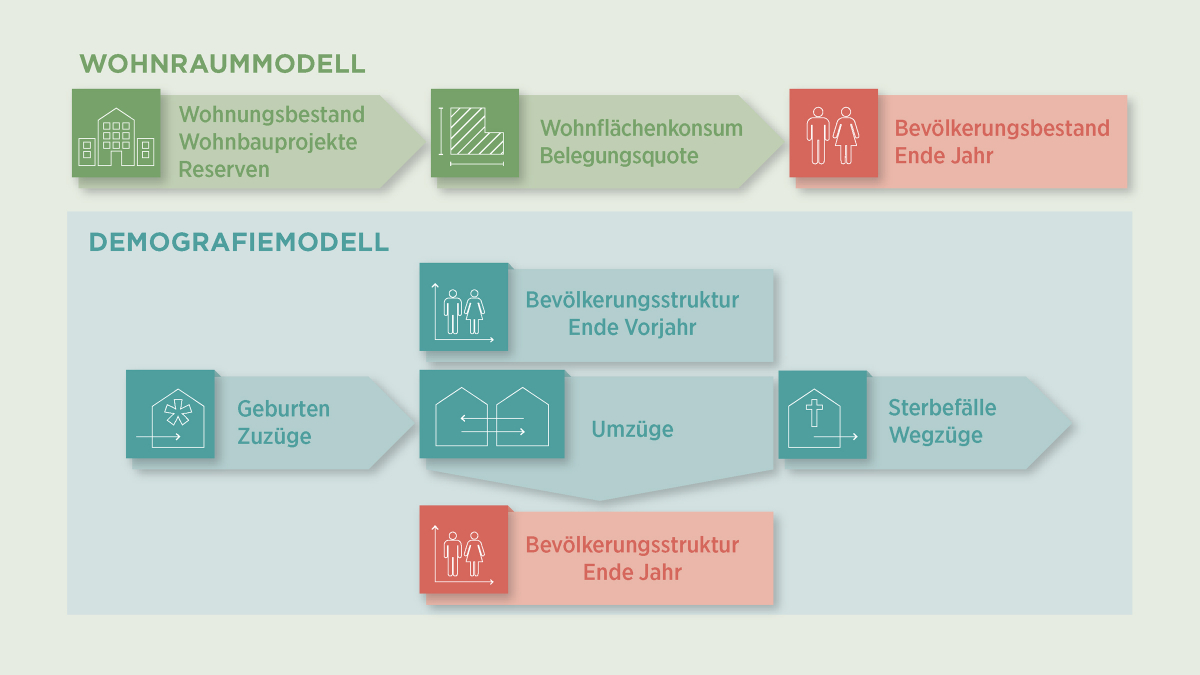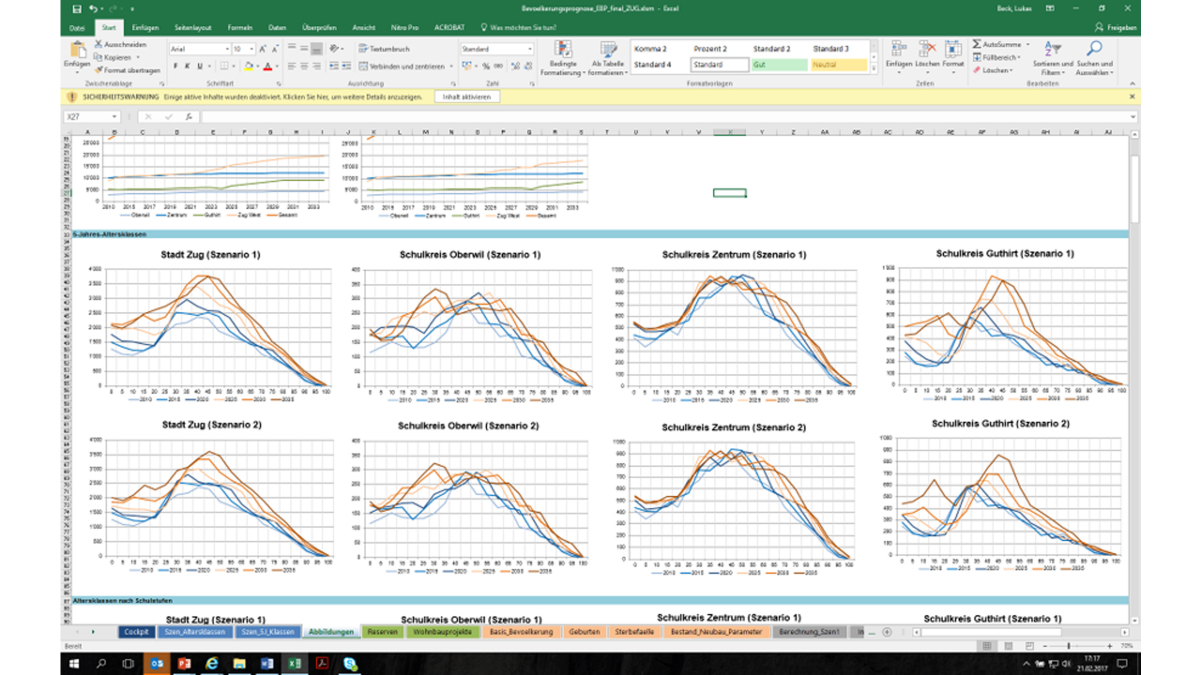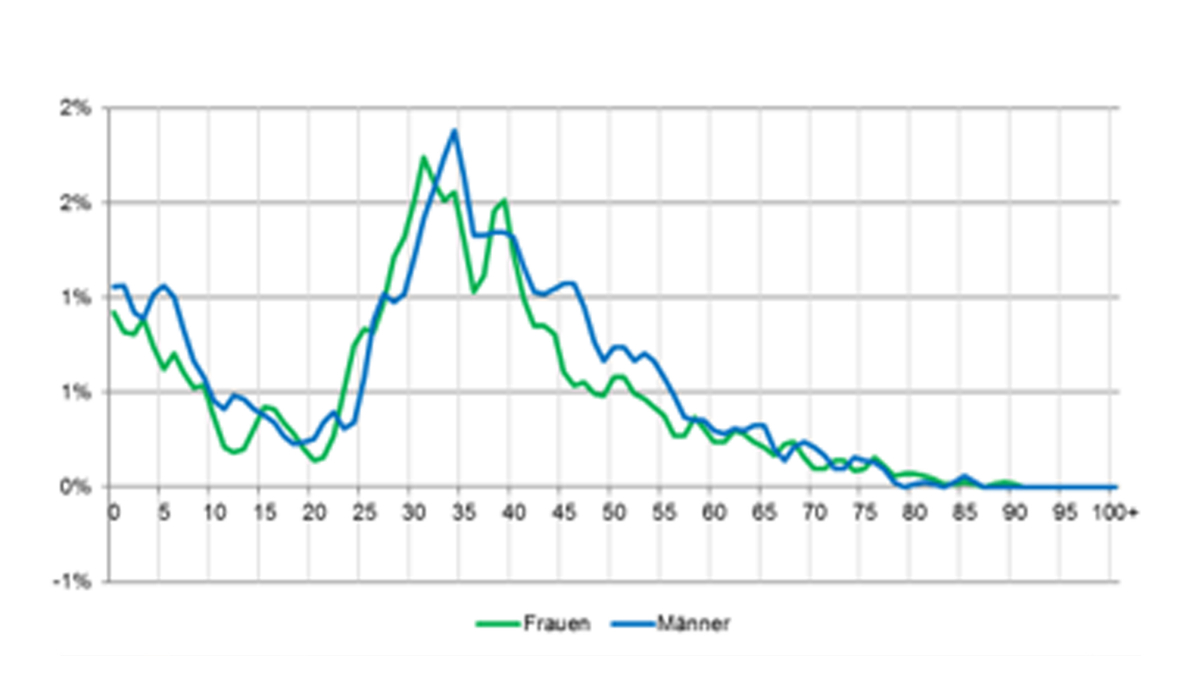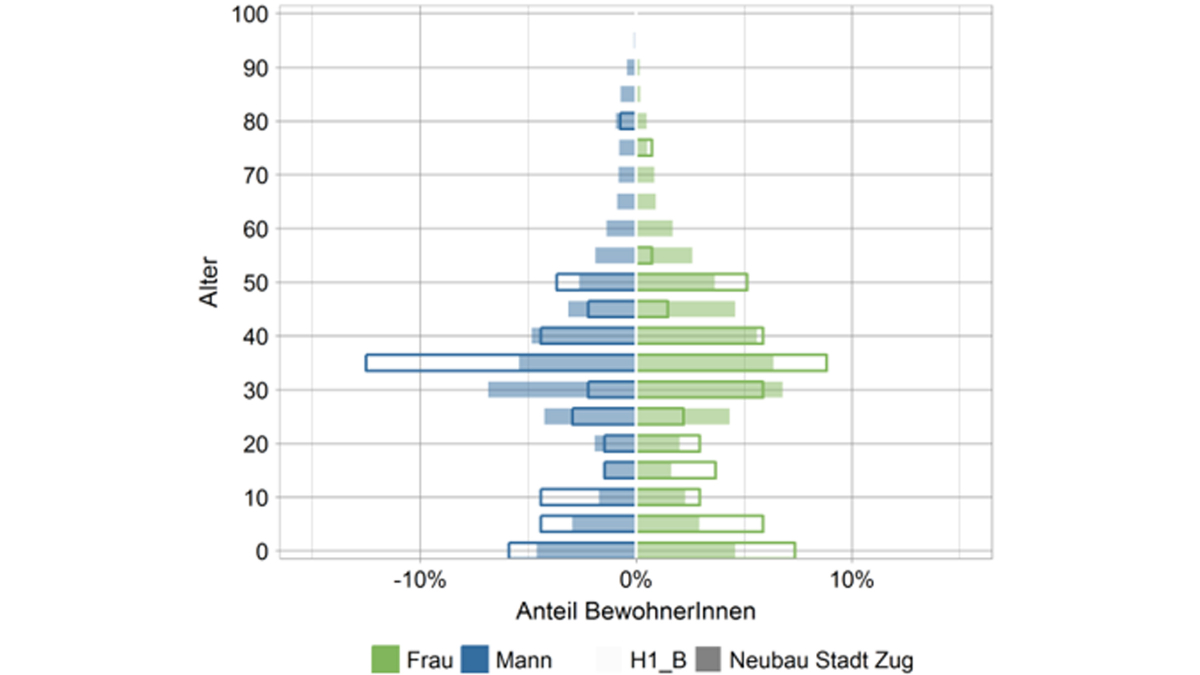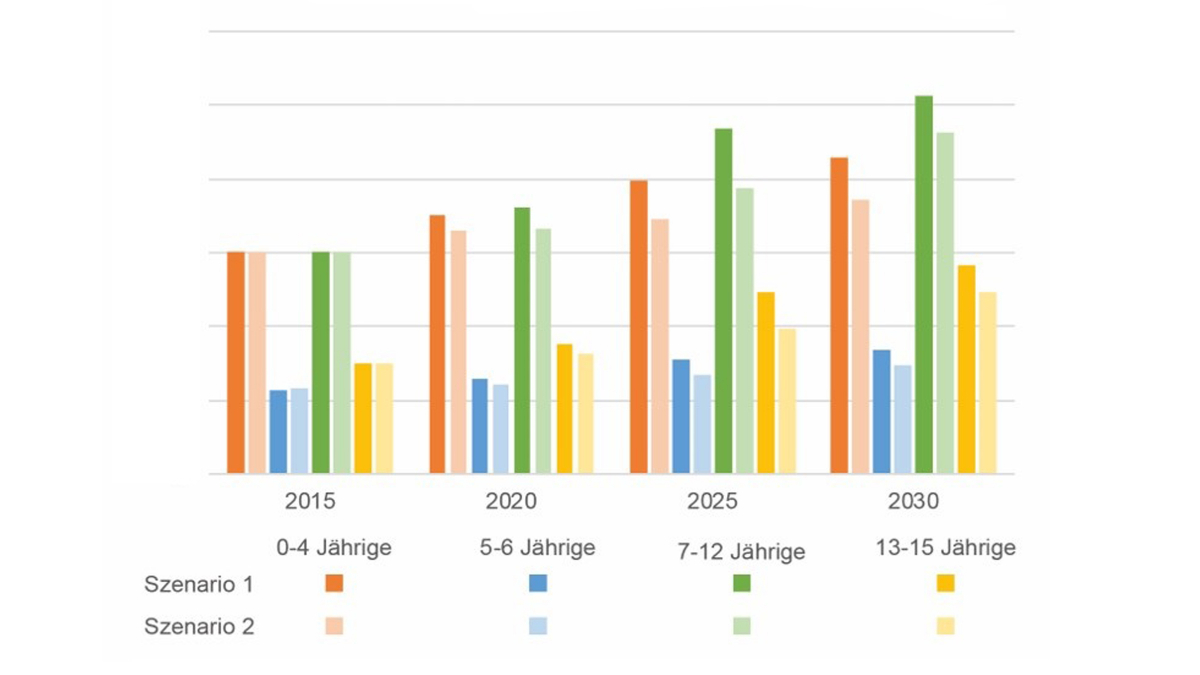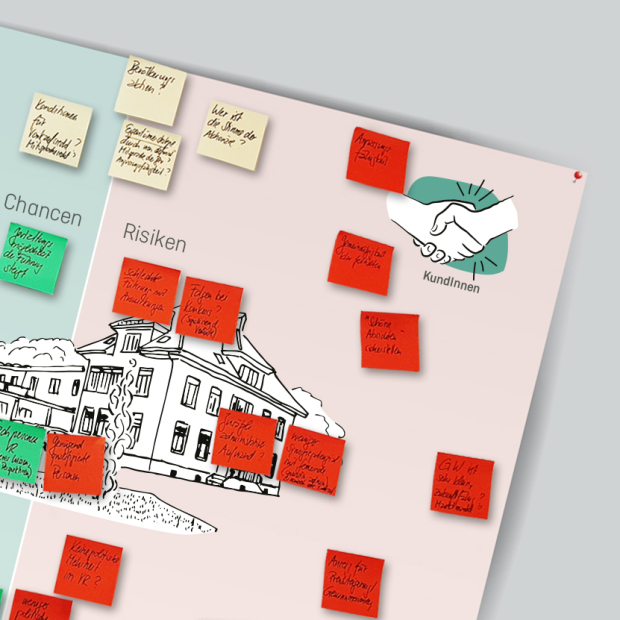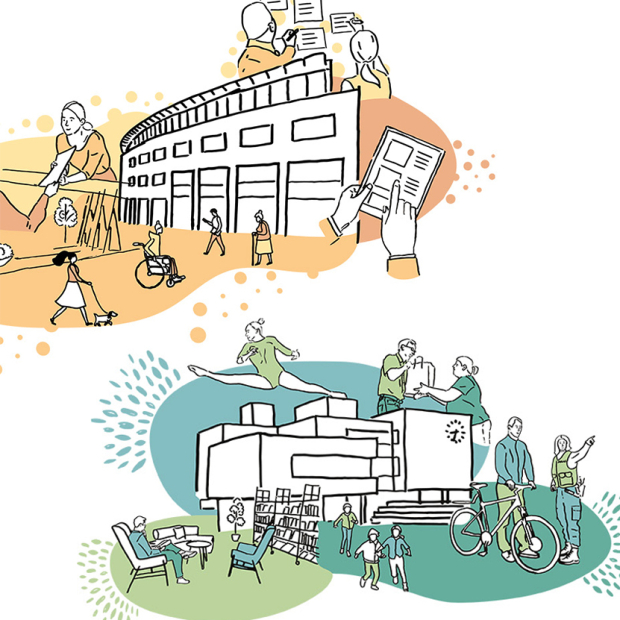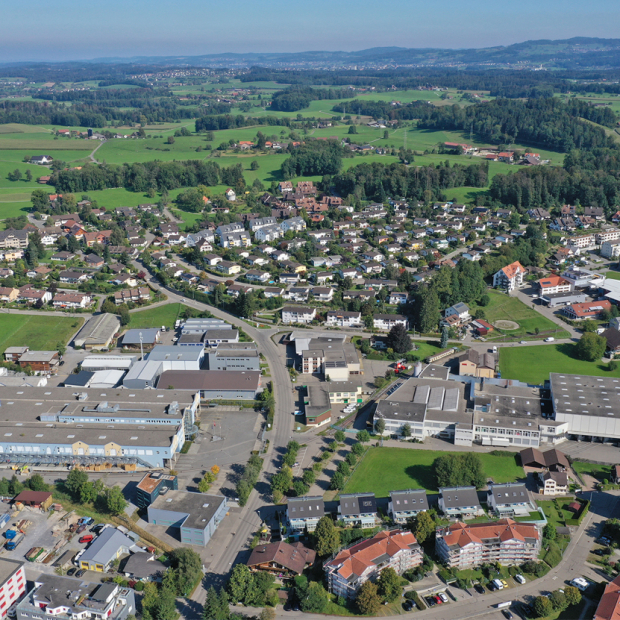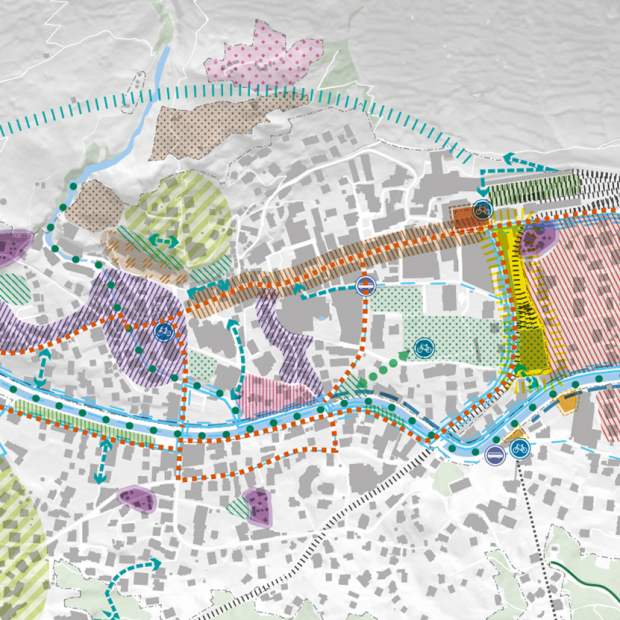

Forecasting pupil numbers in the Swiss city of Zug
The population of Zug has grown rapidly in recent years. In light of this growth, the city commissioned EBP to draft a model that can be used to forecast pupils numbers. The resulting model now provides a basis for planning school expansion projects.
The population of Zug has increased dramatically in recent years. In the wake of this general trend, the number of children and pupils has increased significantly in certain districts and less significantly in others. The unexpected growth has posed a challenge to those responsible for ensuring adequate space for all of the city’s school children. The city’s planning and education departments therefore decided to commission the development of a forecast model that would enable them to arrive at reliable estimates of student numbers.
Multi-scenario demographic population forecast model
Commissioned by the city of Zug to develop a demographic population forecast model, EBP began by examining activities on the market for new-home construction. In the case of all new housing projects set to start in the short and medium term, EBP assumed that the age structure for the residents would be similar to that of the residents who moved into newly constructed buildings in the recent past. As a basis for this assumption, we analyzed the resident profiles for various newly constructed homes according to their owner structures, including resident-owned apartments, rental apartments and building cooperatives. When it came to the long-term development, we assumed that the city of Zug would continue to make use of its reserve properties to keep up with demand.
The result is a population forecast model that shows the expected development of student numbers per school district for the next 15 years. Moreover, the model can be run according to two different scenarios in order to account for uncertainty relating to the actual realization of individual new housing projects. The city of Zug is now equipped with a forecast model that it can use on its own in the context of short, medium and long-term planning so as to effectively accommodate the needs of its school-aged children.
